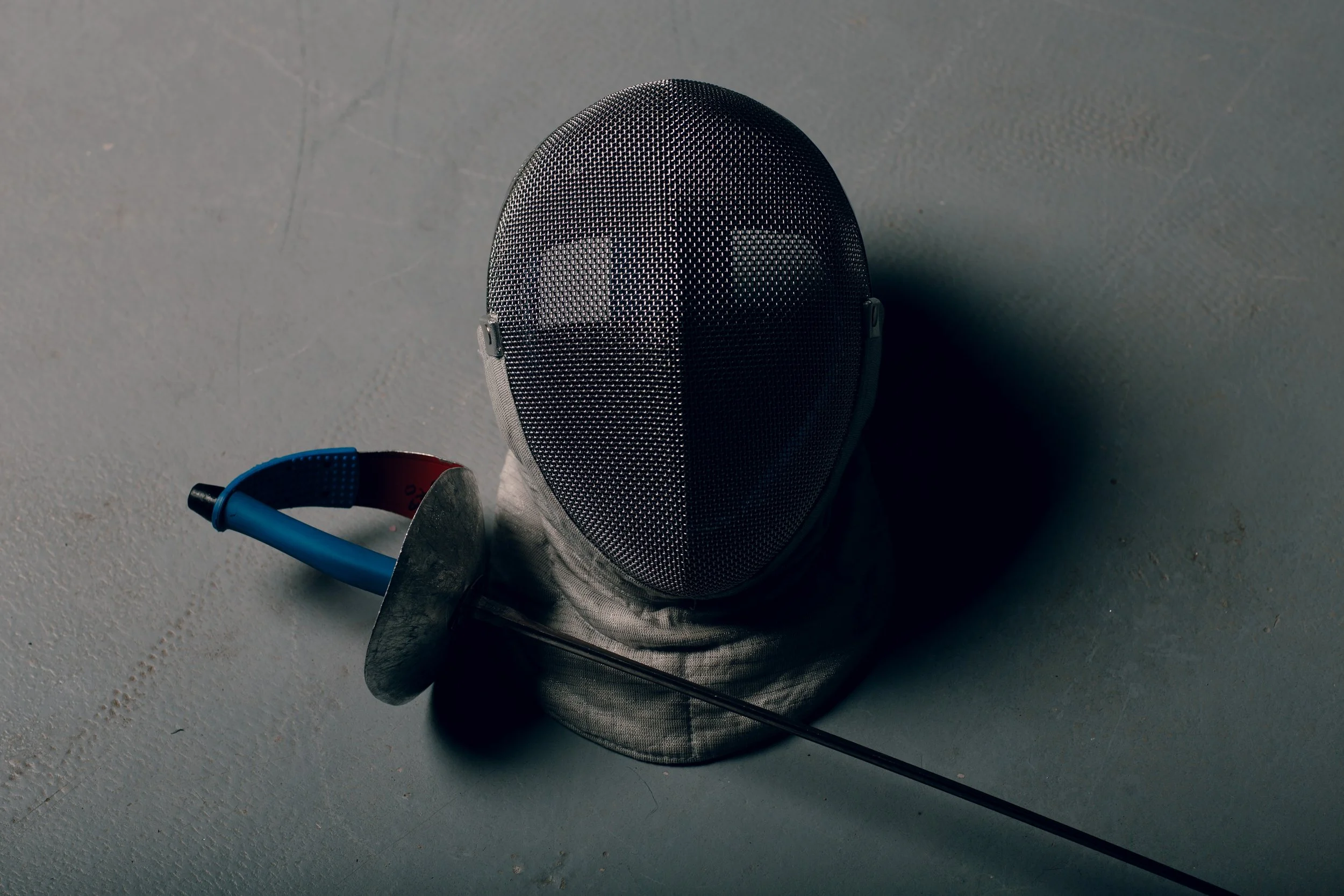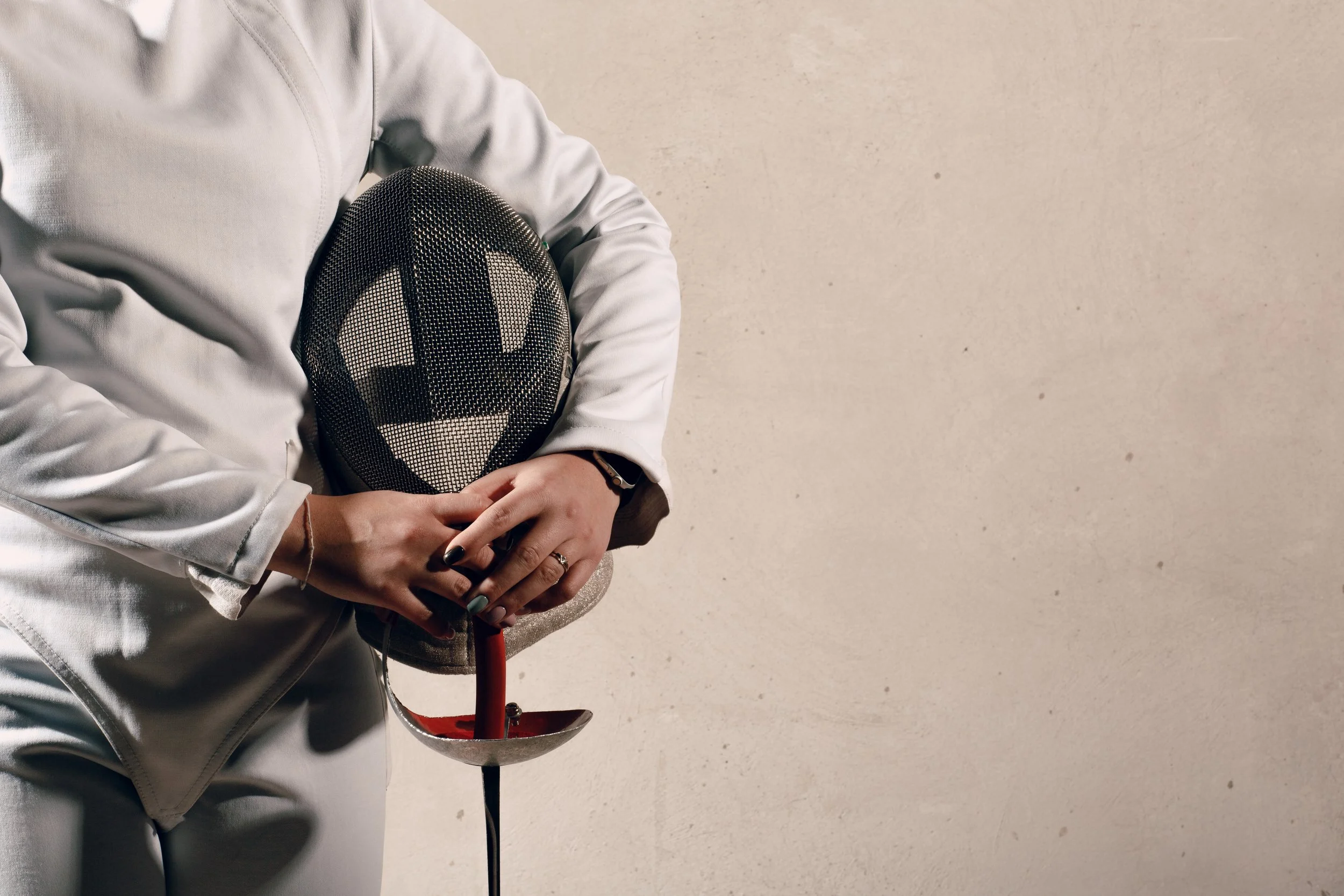
Preparing for Tournaments, The Right Way
Before the Tournament: Optimized Preparation
-

The Body
Strong legs and steady fuel are your foundation. Show up rested, hydrated, and stretched, with a routine that wakes up speed without burning energy. Keep snacks and water on hand so you’re ready to perform as sharply in the final bout as you did in the first.
-

The Mind
Focus and confidence aren’t built at the tournament; they’re set in place before. Preparing your mindset in advance means you’ll step on strip already calm, clear, and ready for the pressure ahead.
-

The Gear
Nobody likes a failed body cord to start out the first pool bout. This section highlights the vital task of verifying all fencing gear—masks, jackets, gloves, weapons, scoring devices, and body cords—are complete, functional, and competition-approved.
Controlling the Bout - Pools & DEs
-

Managing Energy + Focus
Win the long day by metering effort. Use a sharp, efficient warm-up, then mini top-ups before each bout. Hydrate on schedule, graze on simple carbs, and protect your legs so you feel fast when DEs get heavy.
-

Staying Tactical
Arrive with an A-B-C plan and always listen to your coach. The first two exchanges are your scout—distance, tempo, parry habits—then adjust every few points and run set plays that fit the opponent in front of you.
-

Reset Fast
Turn mistakes into momentum. Step back, one slow breath, one cue word, one trusted action—back in. This 10-second loop keeps emotions out of your blade and restores clean, decisive fencing.
After the Competition
-

Recover
The end of a tournament isn’t the end of the work. How you rest and restore in the hours and days after will determine whether you bounce back stronger or carry fatigue into your next training.
-

Review
Every bout leaves behind valuable lessons. Taking time to reflect on patterns, decisions, and outcomes turns the day’s experience into a roadmap for growth.
-

Refocus
A tournament is only one step in the larger journey. Channel what you’ve learned into clear goals and adjustments so your next cycle of training moves you forward with purpose.

